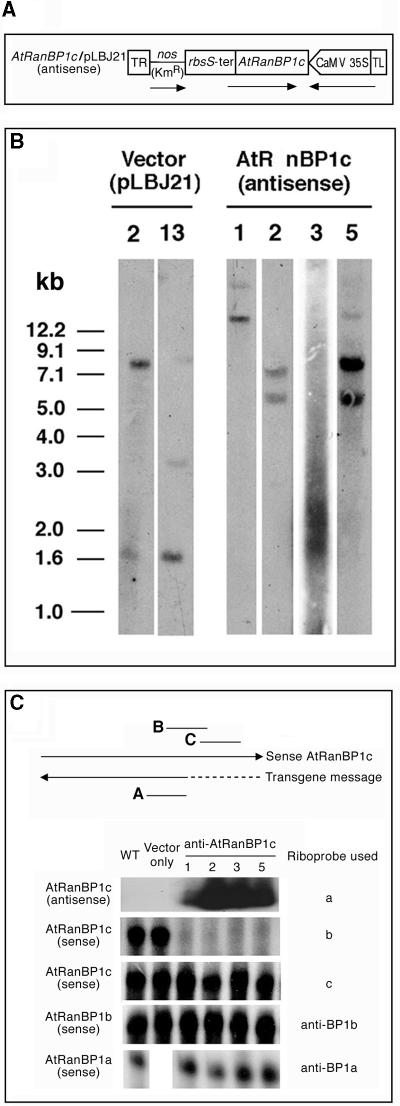Figure 3.
Construction and Characterization of anti-AtRanBP1c Transgenic Plants.
(A) Construction of antisense AtRanBP1c in pLBJ21. Two-thirds of the AtRanBP1c gene was subcloned into pLBJ21 in an antisense direction to the orientation of a 35S promoter of CaMV. Arrows indicate the transcriptional direction of the AtRanBP1c gene. TR and TL, right and left border of the T-DNA; nos, nopaline synthase; KmR, kanamycin resistance gene.
(B) Identification of independent transgenic lines by DNA gel blot hybridization analysis. Ten micrograms of genomic DNA isolated from each transgenic line was digested with EcoRI and fractionated by agarose gel electrophoresis. After the DNA was transferred to a nylon membrane, the blot was hybridized with a 32P-dATP–labeled 35S promoter region of CaMV and washed as described in Methods. The numbers above the gels represent independent transgenic lines.
(C) Expression of known Arabidopsis AtRanBP1 genes in anti-AtRanBP1c transgenic plants. Total RNAs were isolated from wild-type (WT) or transgenic Arabidopsis plants, and the expression of the endogenous AtRanBP1a, AtRanBP1b, AtRanBP1c, or anti-AtRanBP1c transgene was examined by RPA or RNA gel blot analysis as described in Methods. Lines designated a, b, and c represent regions of the anti-AtRanBP1c (a) or AtRanBP1c gene (b and c) protected by riboprobes a, b, and c, respectively. Arrows indicate the transcriptional direction of the sense and antisense message for the AtRanBP1c gene. The dotted line represents the region of the AtRanBP1c cDNA that is missing in the antisense transgene.

